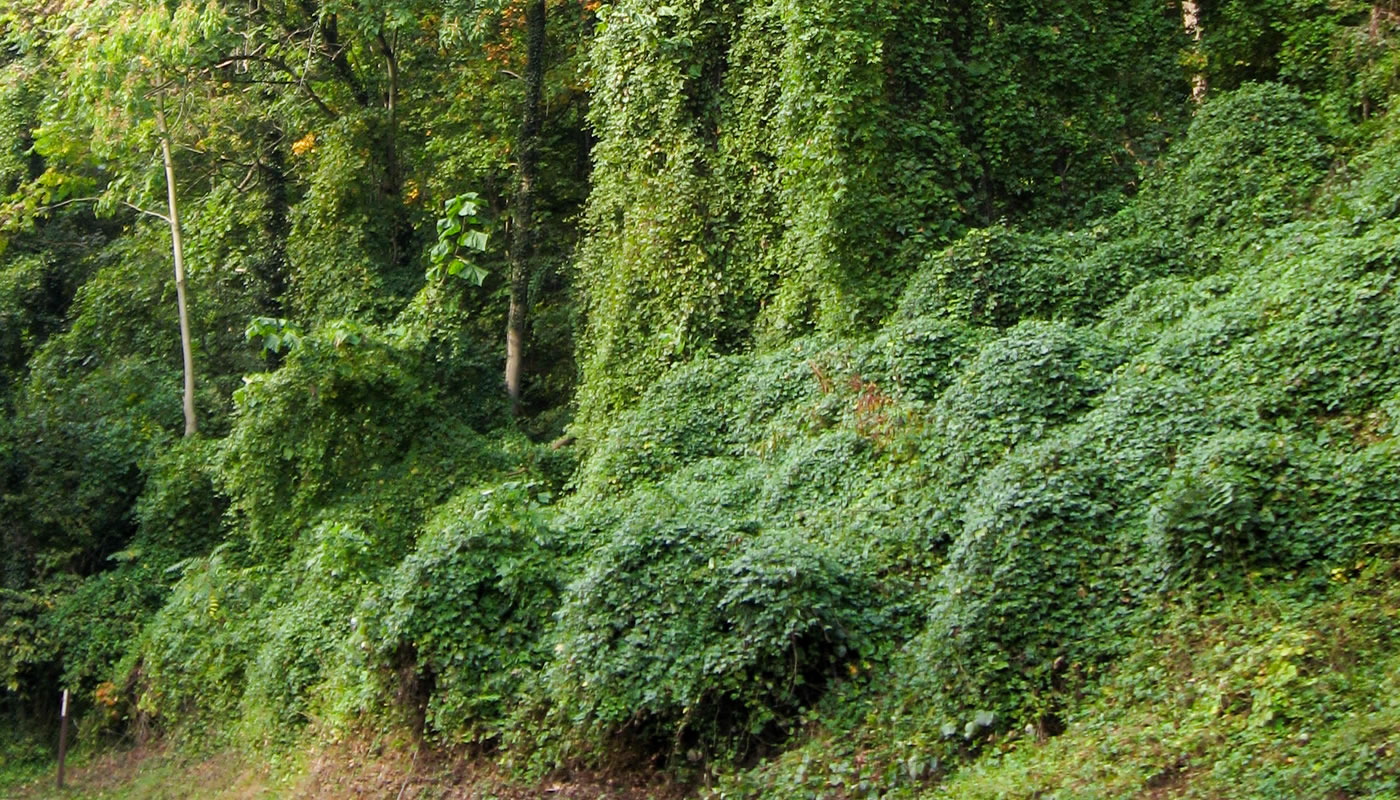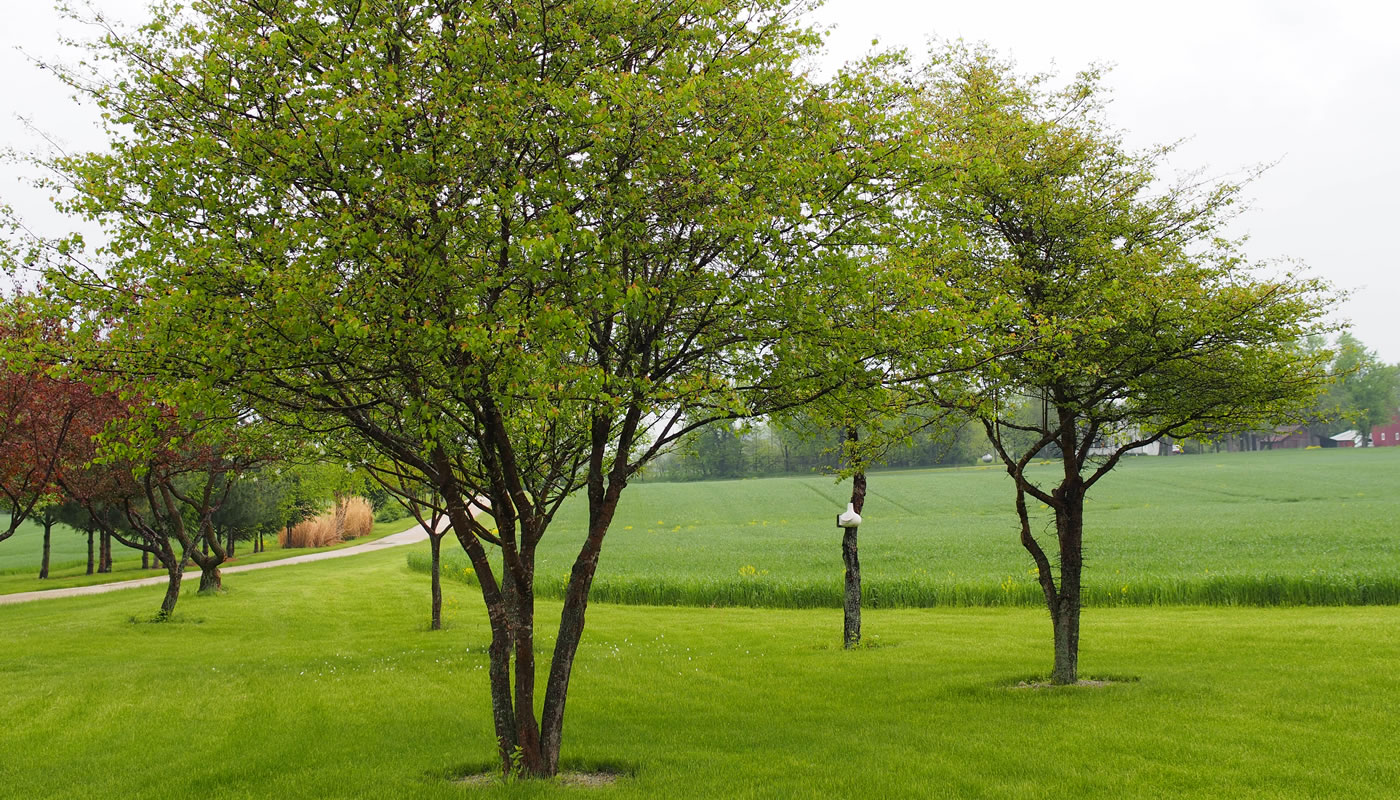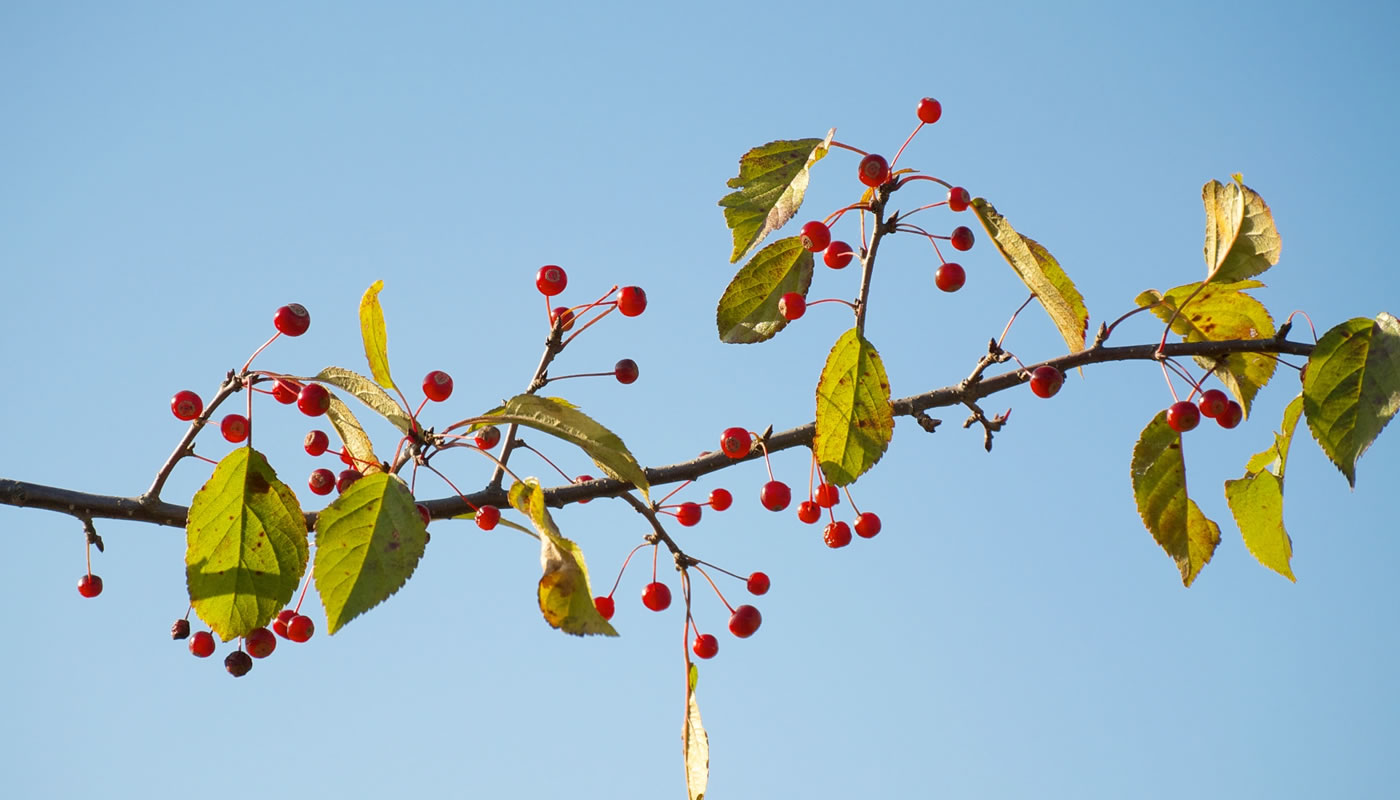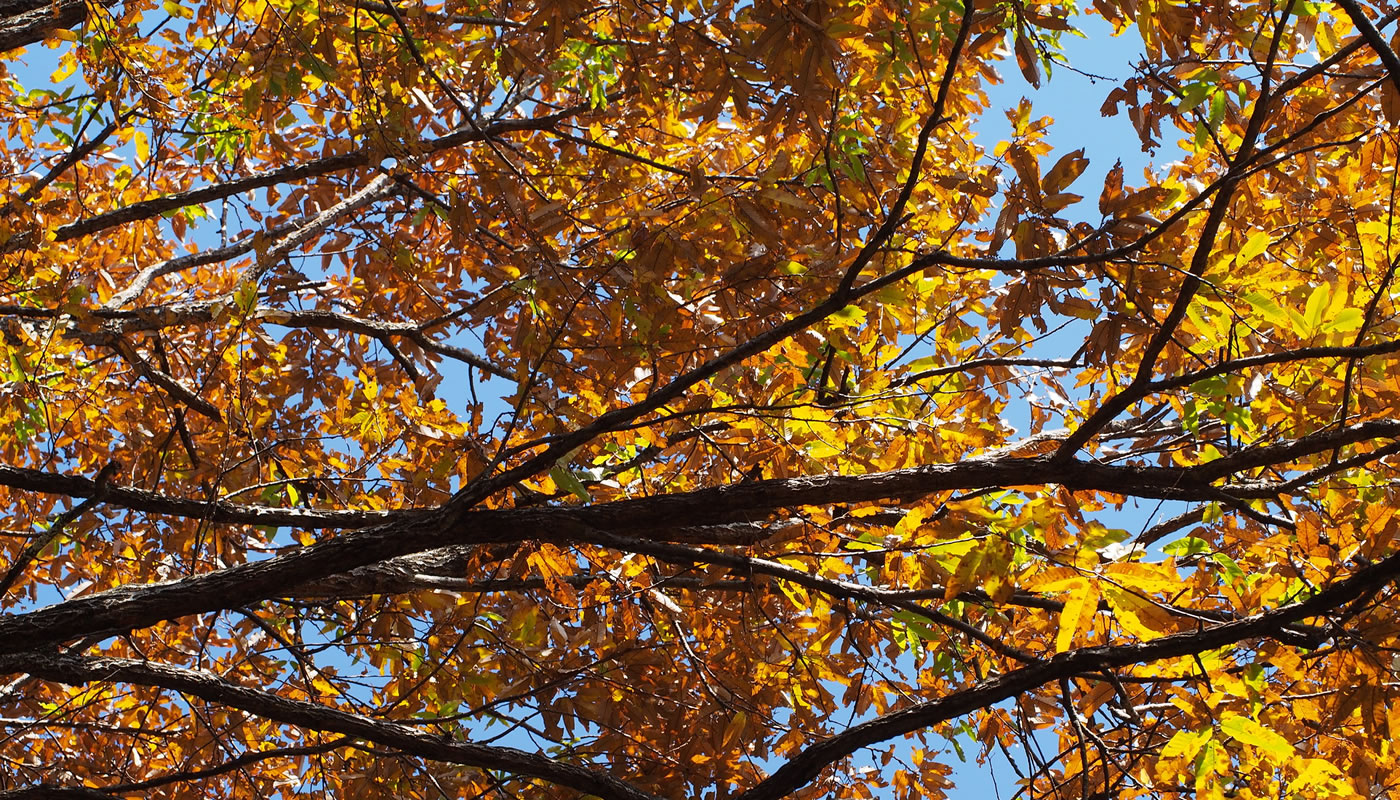As you walk along the trails of the Forest Preserves, you’re surrounded by many trees, bushes and wildlife that dwell within the preserves. You might not know there are invasive species hidden in plain sight that can cause harm to the native biodiversity of our forests, prairies and wetlands.
Woody invasive species—including trees and shrubs—spread into the native plant populations. At first, they reproduce at a slow rate while spreading throughout a region. When they reach a self-sustaining phase, these species start to harm the native plants by out-competing for valuable space. These invasive species spread through many channels, including rivers, air, animals and even people!
Currently, there are seven woody invasive species in our region that haven’t reached the level of invasives like buckthorn. They’ve yet to reach a self-sustaining phase and can still be eradicated with proper treatment.

Porcelain berry (Ampelopsis brevipedunculata) is a perennial vine that grows in open woodlands and along ponds. This woody invasive spreads through waterways, birds and in a vegetative manner. It can be identified by its colorful berries, which become ripe late in the summer and early fall; bark that’s dotted with lenticels; and coarsely toothed leaves that have three to five lobes shaped like a heart.

Washington hawthorn (Crataegus phaenopyrum) was originally an ornamental plant. It grows in partial shade or full-sun exposure and can be found in areas where there is a high deer herbivory. This woody invasive can be identified in June by the five petal white flowers that bloom in a corymb arrangement, or in winter from the small red fruit that it produces. It also has a gray bark that becomes flakey and has sharp thorns when it matures.

Japanese crab apple (Malus toringo) has already been found in a few Forest Preserves locations and in surrounding communities. Its appearance is like that of the Washington hawthorn; however, it can be identified by its mature, smooth, thin bark which may or may not have thorns. In the months of April and May, its flowers bloom in an umbelliform arrangement.

Callery pear (Pyrus calleryana) was introduced in 1916 into the ecosystem to help build a resistance to the fire blight disease that harmed other pear trees. This tree starts to bloom its white flowers in the spring, and it’s spread by birds scattering its seeds throughout the area. It can be identified by its narrow trunk, white flowers with five petals, and its shiny, oval-shaped dark green leaves.

Japanese Angelica tree (Aralia elata) has been found in the northeast part of the country, as well as in a few of Cook County’s forest preserves. It can be identified by its prickly stems, compound leaves, and twigs along with its variable height that ranges from 20 – 40 ft.

Amur cork Tree (Phellodendron amurense) was introduced as a landscape tree during the 1850s, and started to spread by birds scattering its seeds. This invasive species grows well in shaded areas and blooms during the spring and summer. It can be identified by its corky bark (which is neon yellow underneath), its green serrated leaflets, and opposite compound leaves. In the winter, you may spot its unique buds.

Sawtooth oak (Quercus acutissima) was introduced in 1862 as an ornamental tree that grows rapidly; however, it started to spread by its acorns being scattered by animals. You can identify this woody invasive by its shaggy acorns, its widely spaced leaves, and its gray-to-black bark that becomes corky as it ages.
Interested in helping protect the Forest Preserves from these invasive species? Join our community of dedicated volunteers to help take care of your local preserves. Your help will improve the native biodiversity health of the Forest Preserves while also improving your own health by spending time outdoors. Visit our Volunteer Page to learn more!

